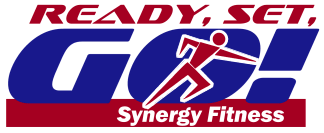
|
||||||||
|
Sports
training and fitness training look like twins, but they have different
goals. Speaking
from his years of experience, Dave Scott, six-time Ironman Triathlon
Champion said;
Sports Training & Nutrition The goal of sports training is to improve the performance of an athlete during competition. The emphasis of training is placed on getting the athlete to "peak" when it counts - the day of the competition. Workouts to improve sports performance and workouts to improve fitness can appear similar. However, the focus of the training may lead to different decisions about exercise and nutrition. For example, carb loading a few days before running a marathon is a wise sports nutrition strategy. Carb loading three months prior to the marathon may actually hinder performance - especially if the athlete is trying to drop body fat so there's less to carry for those 26 miles. Improving sports performance requires a long range plan, typically a year in length. It's been shown that varying a sports training program and progressively building towards the competitive season will yield better results. This is called "Periodization." And it's based on the fact that athletes can't stay in "peak condition" very long. So the goal is to get the athlete to peak during competition.
Periodization and fitness training Periodization is a sports training term that describes the process of varying an athlete's training program at regular time periods to prepare an athlete to "peak" during the competitive season. Peaking requires athletes to taper training a few weeks, or longer, before a competition by systematically reducing the amount of training and changing the method of training. Frequently, taper workouts emphasize the technical aspects (running plays half-speed, starting from blocks, half-speed technically perfect javelin throws) and very little is done for endurance or strength building during the week prior to a competition. Here's where sports and fitness training differ. From a fitness standpoint, it's not wise to do wimpy half speed workouts for an entire week. However, from the sports training focus, tapering the week before a competition will improve peak performance on the day of competition.
The Competitive Season Personally, I perform the anaerobic Sprint 8 Workout for its fitness improvement benefits year round. This workout cuts body fat, tones and builds muscle, and it achieves my fitness improvement goals. This workout also maintains fast-twitch muscle fiber, which aids in injury prevention, and it prepares a base for future sports specific training. When the Masters and Senior Games training season comes around, I'll add some 100 and 200 meter sprints to the workout - since I run in the 100 and 200 meters events in competition. I'll also add some discus and javelin throwing workouts and progressively increase work in this area with the goal of peaking during the competitive season.
Keep it in context When reading about different training strategies, it's important to answer this question, "is this a sports or fitness training topic." For middle-age and older adults, this issue can present a dilemma because much of the information about sports training, and fitness training for that matter, is geared toward young athletes. So when you read an article, it will help to categorize the information as a sport performance or a fitness training issue.
The Off Season During the off season, irrespective of the sport, it's important to stay fit. The focus on fitness training may become the top priority during this time period. This means the fitness strategy of cutting body fat by maximizing exercise-induced HGH might be a better strategy choice over the pre-marathon carb loading strategy, for example, during the off season. If you're young and/or don't need to cut body fat, stay the course with your current program. Now,
if you're running a marathon this weekend, the sports training strategy
of carb loading would take precedence over fitness training strategies. The Take Home If fitness improvement is your objective and you want to drop body fat, the wise strategy would be to maximize exercise-induced HGH by limiting refined sugar for two hours after training. If you're in a sports training mode, and you don't need to trim body fat, the sports performance strategy of carbs after a workout to speed recovery would be the top priority. Have a great day! Phil
Campbell, M.S., M.A., FACHE |
||||||||
National
Library of Medicine: RESEARCH
SUMMARY The book: Ready,
Set, GO! Synergy Fitness for Time-Crunched Adults Order an autographed copy online - toll free - 1 (866) 565-3311 RECOMMEND THIS NEWSLETTER to friends, relatives and anyone interested in improving fitness click here. RECEIVE THIS FREE
NEWSLETTER
click here. WANT TO CHANGE YOUR E-MAIL ADDRESS, simply reply to this e-mail with your old address and new address. TO DISCONTINUE receiving this newsletter, click here. NOTE: The purpose of this newsletter is to expand thinking about fitness as an informational source for readers, and is not medical advice. Before attempting the Synergy Fitness program, the Sprint 8 Workout, or any high-intensity exercise program, consult your physician. This is not just a liability warning; it's wise to have a baseline medical exam before beginning a fitness program. Make your physician a partner in your fitness improvement plan.
|
||||||||
